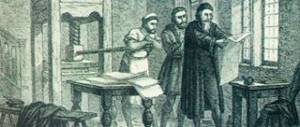Lesson on mercy and kindness with presentation, grades 3-4
Lesson of mercy “White Flower”
“Lessons of mercy” are held in the format of a class hour in all educational organizations of the Republic of Crimea on September 7, 2015 at 9:00 Author: Guseva Irina Aleksandrovna, primary school teacher, MBOU “Gymnasium named after. I. Selvinsky", Evpatoria Description: synopsis of a single Russian lesson for students in grades 3-4. Assignments are adapted to the age of students, the requirements of the Federal State Educational Standard. This material will be useful to primary school teachers. Decoration: the class is decorated with white paper or fresh flowers; You can use photographic materials from the White Flower charity event from different years; photo and video materials about children in need of expensive treatment. The goals of a single lesson: introducing students to the social and cultural heritage of Russia; nurturing feelings of kindness and compassion, awareness of the need for charitable assistance to those in need; formation of love for work.
SINGLE LESSON SCRIPT
I.
The teacher’s opening speech (you can show a video of the parable)
“The Parable of Mercy”
(Samuel Johnson - English writer and thinker) A man was walking along the shore and suddenly saw a boy who was picking up something from the sand and throwing it into the sea. He came closer and saw that the boy was picking up starfish from the sand. They surrounded him on all sides, the coast was literally strewn with them for many kilometers. - Why are you throwing these starfish into the water? - he asked the boy, coming closer. “If they stay on the shore until tomorrow morning, when the tide begins to ebb, they will die,” answered the boy, without stopping his work. - But look around, there are millions of starfish here, do you think you can change something? The boy picked up the next starfish, threw it into the sea and said: “Yes, I can change a lot... for this star!” Anyone who waits to do a lot of good things at once will never do anything. Life is made up of little things. It is very rare that you have the opportunity to do a lot at once. True greatness is being great in the little things. Conversation - What did the boy do?
- Why didn’t the passing person understand him? - What can a boy change for a star? -What would you think about? — What does the expression “Life consists of little things” mean? — What is the topic of our class hour? (children's assumptions) II. Working on the topic “Lesson of Mercy”
-What is mercy?
(slide 2)
Etymological dictionary: Mercy - the word was borrowed from Old Church Slavonic, where it was formed using the tracing method from the Latin misericordia - “compassion, pity”. (slide 3)
Ushakov's Explanatory Dictionary
`
Mercy is the willingness, out of compassion, to provide help to those who need it.
History of the White Flower in Russia 1911-1914
(slide 4)
Coming on vacation to the Crimean estate, the royal family, along with its obligatory ceremonies, balls, yacht rides and fashionable cars, also introduced a completely different kind of custom - charitable traditions.
At this time, numerous free hospitals and medical sanatoriums for poor patients were built along the southern coast of Crimea. (slide 5)
During each visit to Yalta, to the new Livadia Palace, the family of Sovereign Nicholas II holds a charity event - “White Flower Day” to collect help for poor patients.
The good deed started in Crimea resonated throughout the country. Since 1911, “Flower Days” have been held throughout the Russian Empire thanks to the support of the Emperor. In all major cities, during White Flower Days, volunteers handed out white flowers for donations, and the funds collected were sent to events related to providing assistance to tuberculosis patients. In support of the action, charity bazaars were held in the city, buffets were opened, and concerts were held. (slide 6-7)
Leaflets about disease prevention were distributed on the streets, testing points were set up in many places, and free lectures were given.
In Yalta, the entire royal family took part in the “White Flower”. (slide
In 1911 - 1914, Empress Alexandra Feodorovna personally organized four large bazaars in favor of tuberculosis patients on the embankment.
Together with the Grand Duchesses, she came up with crafts ahead of time, drew and embroidered for the bazaar, and at the festival itself she stood at the kiosk all day, surrounded by a huge crowd of people. (slide 9)
The holiday was held on a grand scale - cars decorated with flowers drove around the city with young ladies handing out small bouquets to everyone who wanted to help raise funds for the sick.
In the center of the city there were celebrations, concerts, sweets were sold, curiosities of the early twentieth century were sold at auctions - cars, in a word, the whole city united in collecting donations. Young couples who had signed up as volunteers for the White Flower Committee strolled along the embankment; their costumes were decorated with “Donate for those suffering from consumption” ribbons; some carried poles. Flower Days were very popular in Russia and holidays were held several times a year, donating funds to a variety of types of help. (slide 10)
With the money collected, sanatoriums, hospitals, almshouses, and shelters were built, they helped the families of crippled soldiers and fire victims, and large families left without a breadwinner.
The idea of White Flower Day was born in Switzerland. In 1908, young people with shields decorated with white flowers (daisies) first appeared on the streets of Geneva. Chamomile as an emblem of the fight against tuberculosis, and sold flowers brought income to anti-tuberculosis organizations. After the revolution of 1917, the holiday was banned, like everything connected with the royal family. (slide 11)
Since 2005, “White Flower” has returned to major cities of the Russian World.
And the revival began in Yalta. At first it was a small school holiday near the walls of the Livadia Palace, which was organized by a Yalta history teacher in memory of the family of Nicholas II. “White Flower” established itself in the city, it was awaited and lovingly prepared by all the townspeople every spring, and thanks to the support of the Yalta city administration and the Livadia Palace Museum, the holiday became famous far beyond the city and annually attracts thousands of people from all over the spring Crimea. Just like 100 years ago, in the alleys of the Livadia Palace decorated for this day, volunteers call for participation in charity works and collect donations, and in return give hand-made flowers. Famous musical groups perform on the open stage. Along the alley, fair rows are lined up, just like under the empress, decorated with snow-white fabric and flowers. The funds collected at the White Flower were used to purchase expensive medicines and pay for operations. Since 2011, “White Flower” has been revived in Moscow. Since 2013, the White Flower League has been reviving the holiday in the regions of Russia: in Kostroma, Belgorod, Voronezh, Kursk, Solikamsk, Yekaterinburg, St. Petersburg, etc. According to the tradition established by Sovereign Nicholas II, White Flower Day unites thousands of people in business helping your neighbor: ordinary people, entrepreneurs, politicians, cultural and artistic figures. Educational institutions, Orthodox parishes, and workshops participate in the preparation of the holiday; artists bring their paintings; famous cafes and restaurants prepare treats for guests of the holiday; Monasteries come with baked goods, kvass and unique handicrafts. There is great joy in my heart that the “White Flower” holiday, which was revived in Yalta, unites more and more people from different cities every year. But above all, the revival of the tradition of mercy serves us ourselves - it softens hearts, reconciles with each other, brings peace to earth and testifies to our unity. (slide 12)
The Government of the Republic of Crimea has also planned to hold the all-Crimean charity festival “White Flower”, in the preparation of which several Crimean cities will take part. The main event of the festival will be the “White Flower” on the Yalta embankment, which is scheduled for September 27, 2020. The funds raised will also be used for the rehabilitation of disabled Crimean children with rare diseases. Preparations for the holiday have already begun.
III.
Creative task “Laws of Mercy” (slide 13)
Imagine that you are invited to a country ruled by a merciful ruler.
Divide the class into a group and ask each group to tell what laws of mercy are in place in this country for people or animals. Which of these laws can be applied in the classroom? (during the winter, make bird feeders; make crafts for a charity fair at school, make prizes for a win-win lottery, etc.) (slide 14-15)
Charity every day 1. One millionaire from Maryland dresses up as Batman in his free time and visits children in hospitals.
2. This man's name is Dobri Dobrev. He is 98 years old. He fought in World War II, was wounded and lost his hearing. Every day he walks 10 kilometers from his village to Sofia, where he begs. Everyone in Sofia knows and loves this old man. It recently became known that he donated all the money raised (40 thousand euros) to the last cent to restore Bulgarian monasteries and pay off the debts of local orphanages. Dobri Dobrev himself wears homemade clothes and lives on a pension. IV.
Summing up (slide 16)
Ilya Nikolaevich Shevelev said: “Mercy is active kindness.”
Guys, I urge you to rush to do good, to decorate your life and the lives of those around you with good deeds. VIDEO “The Parable of the Starfish”
Presentation on the topic: Lesson of mercy “White Flower”
We recommend watching:
Class notes for grades 3-4 for Victory Day Class notes for grades 3-4 “Colors of Nature” Class notes for elementary school on the topic “Give a Smile” Class notes for grade 3 on the topic “Motherland”
Similar articles:
Class hour on the topic Health in 3rd grade
Class hour in 3rd grade on the topic “Human skin and its health”
Class hour for 2-3 grades. State and children's rights
Class hour for grades 3-4 on the topic “Fire does not forgive mistakes!”
Class hour for grades 2-3 on the topic: Kindness




